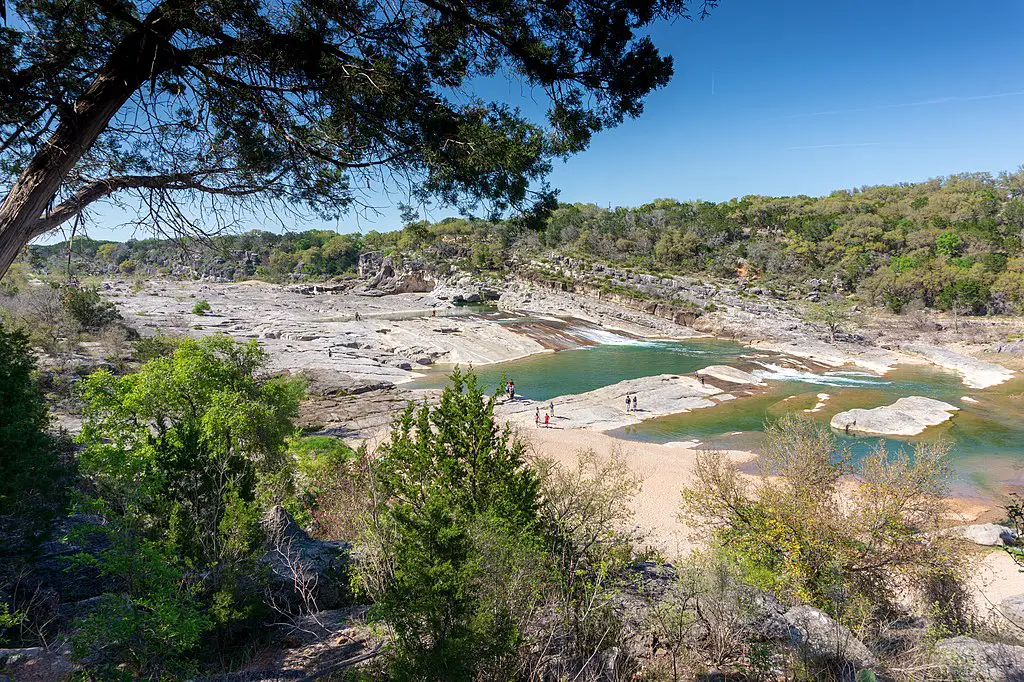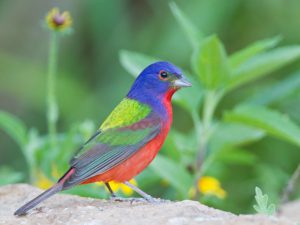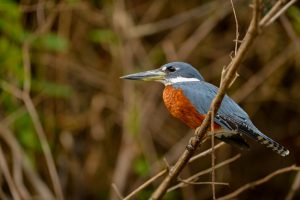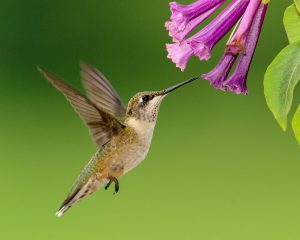Texas has a total of 85 state parks and state natural areas. While some are better for scenic views and hiking, a specific handful offer fantastic bird watching opportunities.
The best state parks for birding tend to be in the southern half of the state due to higher species diversity and strong numbers of migrants during spring.
If you want a guaranteed great morning of birding, the following seven state parks are sure to deliver.
The Top Texas State Parks for Birding:
- Brazos Bend State Park (Houston)
- Estero Llano Grande State Park (Far South Texas)
- Bentsen Rio Grande Valley State Park (Far South Texas)
- Choke Canyon State Park (South of San Antonio)
- Pedernales Falls State Park (Austin)
- South Llano River State Park (2 Hours West of San Antonio)
- Goose Island State Park (Corpus Christi
Quick Comparison
Here’s how many species you can expect to see in a single morning.
| State Park | Species in 2.5 Hours |
| Brazos Bend | 50 |
| Estero Llano Grande | 60 |
| Bentsen Rio Grande Valley | 50 |
| Choke Canyon | 50 |
| Pedernales Falls | 40 |
| South Llano River | 40 |
| Goose Island | 35 (50*) |
Brazos Bend State Park
Tips for Birding Brazos Bend State Park
- Pick up grassland species along the entrance road and on the Prairie Trail.
- Spend about ⅓ of your time birding the abundant hardwood forest.
- Spend the other ⅔ of your time walking wetland edges at 40 Acre Lake and Elm Lake.

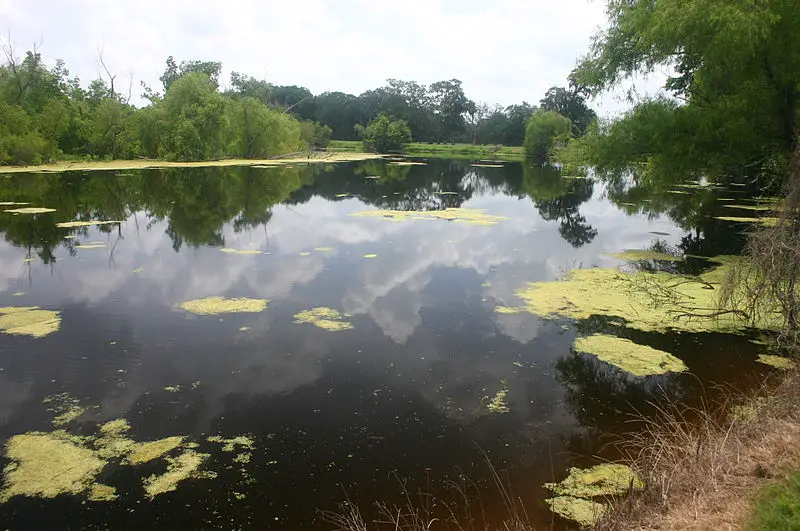
Located southwest of Houston, this park features a mix of hardwood forest and open wetlands. The birding here is consistently good year-round, regardless of season.
Proximity to the coast means herons, egrets, and ibises are everywhere. Waterfowl are present in strong numbers during winter months, and Least Bittern is fairly common during the warm months.
Bald Eagles are regular sightings here November through March. Sometimes multiple individuals can be seen in a single visit. They’re most often spotted flying over 40 Acre Lake.
April through the summer brings Prothonotary Warbler and Northern Parula in strong numbers. Both can be heard singing from the trees around the wetlands and creek. Herons and egrets can be seen feeding and raising chicks from their large, messy nests over the wetlands.

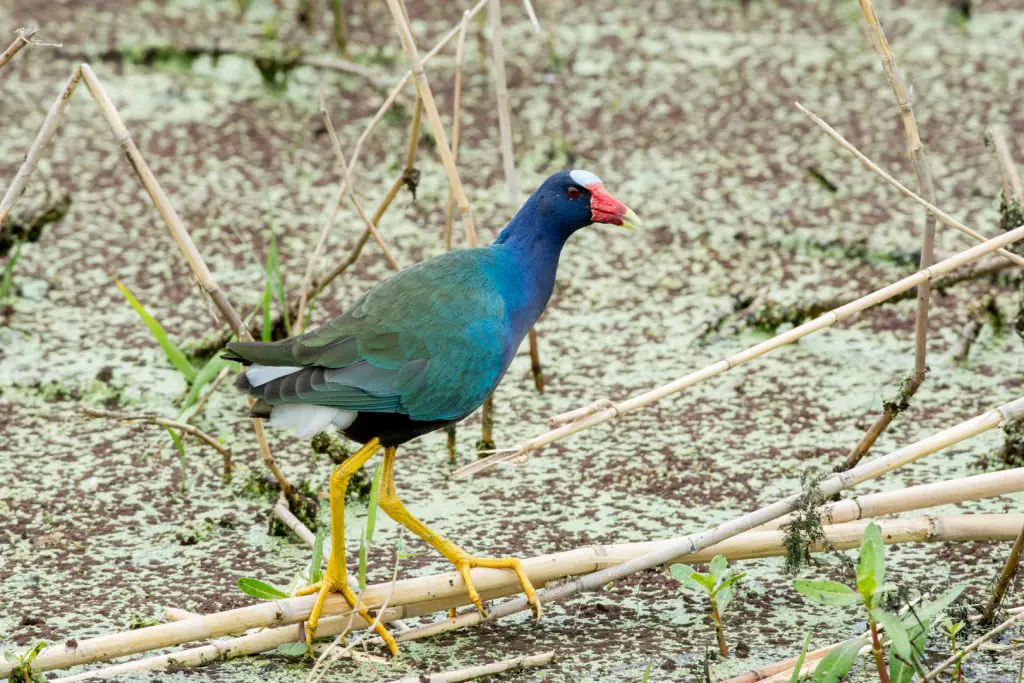
For a great experience here, spend about a third of your time birding woodland edges and within the trees, and the other two thirds walking wetland edges are 40 acre lake and Elm Lake. This will maximize your species list and number of birds seen.
Birds of Interest at Brazos Bend State Park
| Fulvous Whistling-Duck | Year-round |
| Pileated Woodpecker | Spring – Fall |
| Purple Gallinule | Spring – Fall |
| Least Bittern | Spring – Fall |
| Prothonotary Warbler | Spring – Fall |
| Wood Stork | June – October |
| Cinnamon Teal | Winter |
| American Bittern | Winter |
| Bald Eagle | Winter |
| Sandhill Crane | Winter |
| Vermillion Flycatcher | Winter |
| LeConte’s Sparrow | Winter |
Estero Llano Grande State Park
Tips for Birding Estero
- Spend 20-30 minutes enjoying the observation deck at HQ building.
- Visit Alligator Pond.
- Take your time in the Tropical Zone.

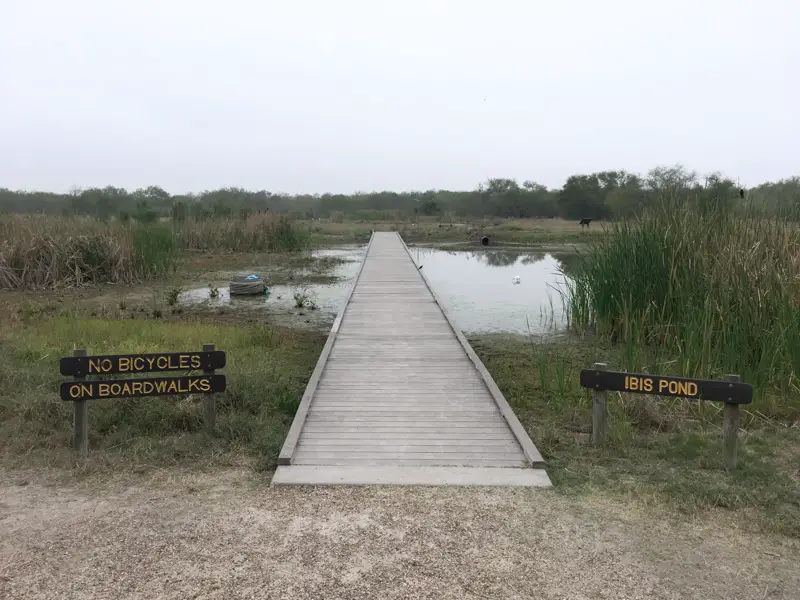
Located just a few miles north of Mexico, this relatively small park is famous for its fantastic bird watching.
As you approach the office you’re greeted by a large observation deck overlooking shallow wetlands. Birds are always active here, making it one of the best spots in the whole park.
Some birders will bring a chair and spotting scope, settle in with a cup of coffee, and observe 50+ species in 2.5 hours without moving from this deck.
The small ponds on the property are good for Least Grebe, Great Kiskadee, Tropical Kingbird, and ducks in the winter, including Cinnamon Teal.
Alligator Pond is good for Green Kingfisher, and sometimes Ringed Kingfisher. Listen for their calls to detect them. Kingfishers spend much of time perched motionless on branches overhanging the water, so hearing them is often the way to find them.
The Tropical Zone is an area of tall hardwood trees, including multiple tropical species. It’s great for Green Jay, Plain Chachalaca, Buff-bellied Hummingbird, and White-tipped Dove. Sometimes rarities will show up here, like Rose-throated Becard.
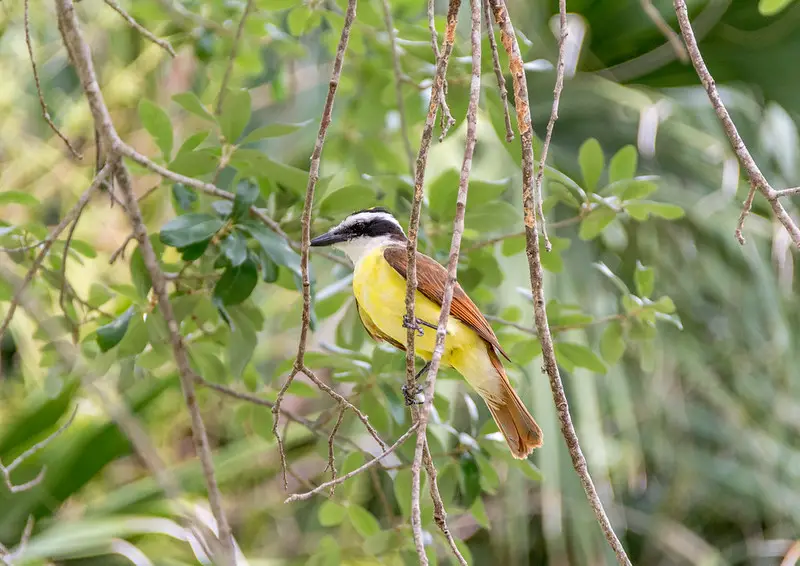

Of all the great parks and refuges in south Texas, Estero probably requires the least amount of walking. If you want a laid back morning of great birding, Estero is for you.
Visit the Estero Llano Grande page for a detailed birding guide to this location.
Birds of Interest at Estero Llano Grande State Park
| Fulvous Whistling-Duck | |
| Plain Chachalaca | |
| Least Grebe | |
| White-tipped Dove | |
| Common Pauraque | |
| Buff-bellied Hummingbird | |
| White-tailed Kite | |
| Harris’s Hawk | |
| Ringed Kingfisher | |
| Green Kingfisher | |
| Northern Beardless-Tyrannulet | |
| Great Kiskadee | |
| Tropical Kingbird | |
| Green Jay | |
| Clay-colored Thrush | |
| Olive Sparrow | |
| Altamira Oriole | |
| Groove-billed Ani | Spring – Fall |
| Hooded Oriole | Spring – Fall |
| Wood Stork | June – October |
| Cinnamon Teal | Winter |
| Mexican Duck | Winter |
Bentsen Rio Grande Valley State Park
Tips for Birding Bentsen
- Slowly work the vegetation around the visitor center.
- Pause at the feeders at La Familia Nature Center.
- Walk to Kingfisher Overlook on the water.
- If time allows, visit the Kiskadee Blind and Hawkwatch Tower.

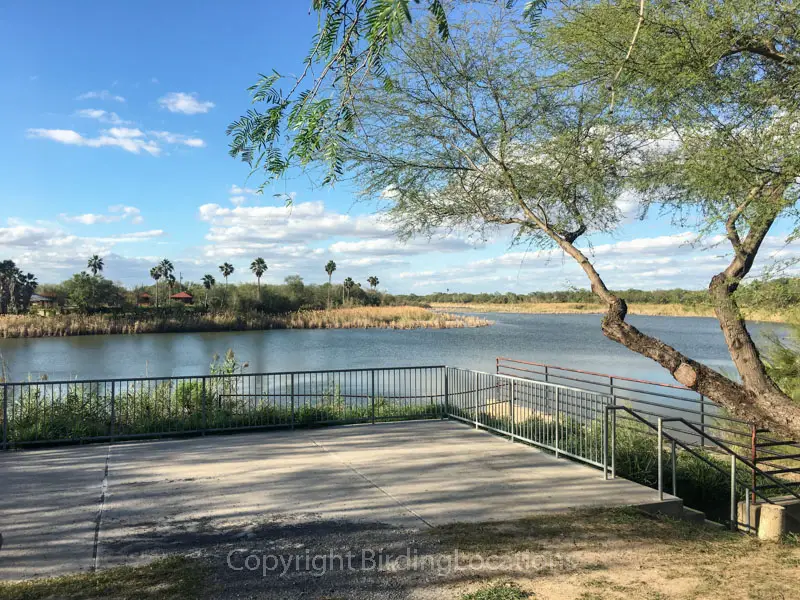
Bentsen State Park is different from Estero State Park in that it’s a more dense, shrubby woodland of Mesquite and Ebony trees, rather than the open wetlands of Estero.
Bentsen is better for Northern Beardless-Tyrannulet, Altamira Oriole, and Hooded Oriole. It’s also proven to be a rarity magnet over the years, so check for recent rare bird sightings before you go.
This state park is designed specifically for birding. Feeding stations and bird blinds are scattered throughout the park. Expect lots of close of views of south Texas specialty species.
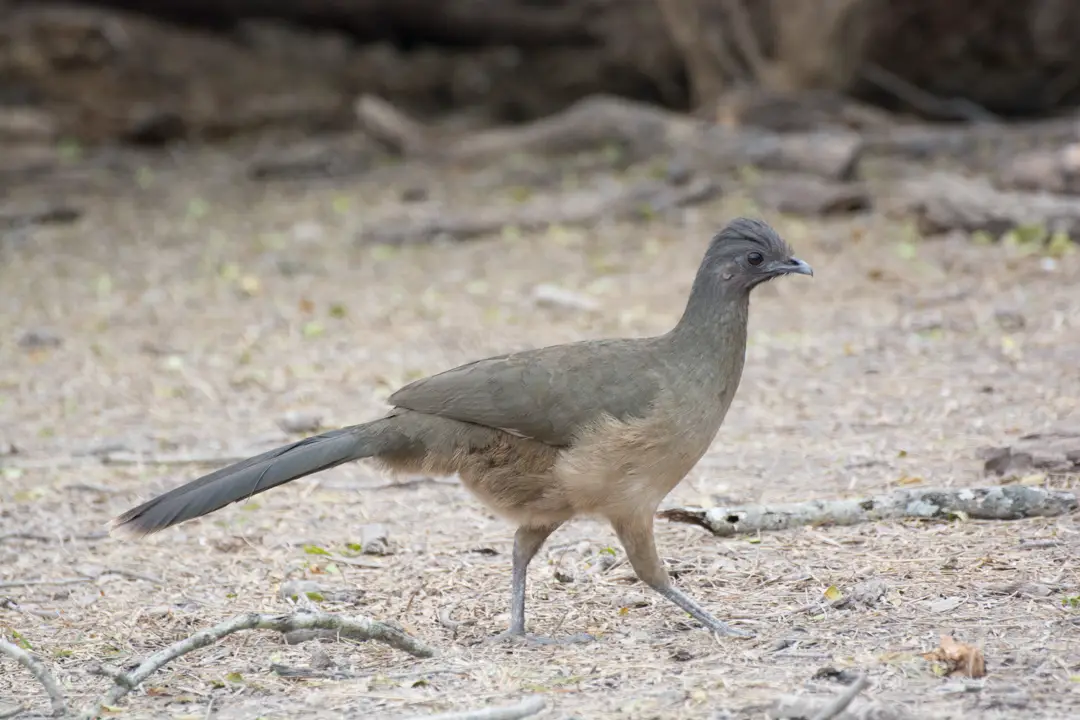
Vehicles are prohibited from entering the park (except for border patrol), so the birds remain relatively undisturbed.
To get around you can rent a bicycle from the front office, or bring your own. A tram service is also offered free of charge, making a loop through the park every hour on the half hour (at 8:30am, 9:30am, 10:30am, …).
Overall, expect a lot of walking and birding on foot here, and a lot of active bird blinds.
Visit the Bentsen Rio Grande Valley page for a detailed birding guide.
Birds of Interest at Bentsen Rio Grande Valley State Park
| Plain Chachalaca | |
| Least Grebe | |
| White-tipped Dove | |
| Common Pauraque | |
| Buff-bellied Hummingbird | |
| White-tailed Kite | |
| Harris’s Hawk | |
| Gray Hawk | |
| White-tailed Hawk | |
| Ringed Kingfisher | |
| Green Kingfisher | |
| Northern Beardless-Tyrannulet | |
| Great Kiskadee | |
| Tropical Kingbird | |
| Green Jay | |
| Clay-colored Thrush | |
| Olive Sparrow | |
| Altamira Oriole | |
| Groove-billed Ani | Spring – Fall |
| Hooded Oriole | Spring – Fall |
| Lesser Nighthawk | Spring – Fall |
| Brown-crested Flycatcher | Spring – Fall |
Choke Canyon State Park – Calliham Unit
Tips for Birding Choke Canyon
- Bird the boat ramp area.
- Thoroughly scan 75 acre lake.
- Visit the bird blind and camping area at the north end.

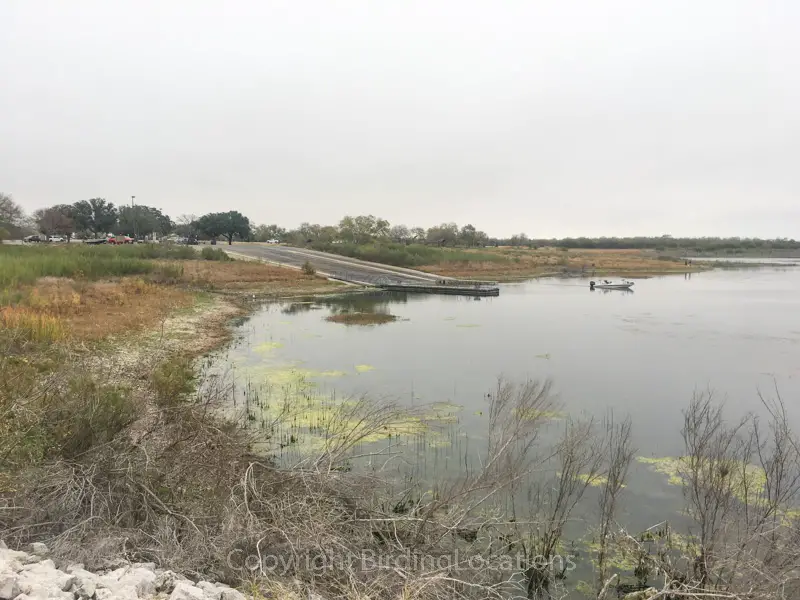
Right between San Antonio and Corpus Christi is Choke Canyon State Park. The bird watching here is consistently good year-round, and it’s easily one of the best birding hotspots in this region of the state.
Choke Canyon offers the chance to see south Texas species without traveling to the southern tip of the state. Green Jay, Great Kiskadee, and Harris’s Hawk are all easy pickings. Audubon’s Orioles are regulars at the bird blind.

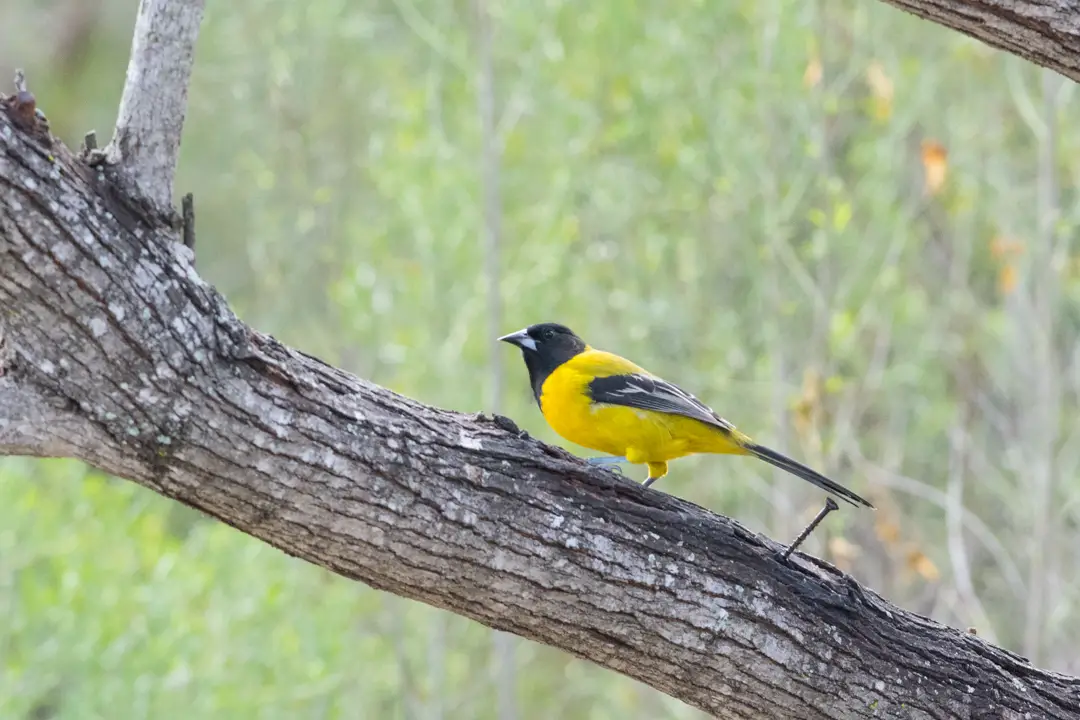
Winter months are excellent here due to the abundance of water from Choke Canyon Reservoir. Ducks are everywhere, especially 75 Acre Lake. Gulls, American White Pelican, and Osprey are common flyovers. Combine that with the songbirds and raptors down low, and birder’s have more than enough to keep them entertained for a full morning.
Birders can expect 45 to 50 species in two hours, or 60+ species in three hours.
Visit the Choke Canyon page for a detailed birding guide.
Birds of Interest at Choke Canyon State Park
| Fulvous Whistling-Duck | |
| Mottled Duck | |
| Least Grebe | |
| White-tipped Dove | |
| Greater Roadrunner | |
| Harris’s Hawk | |
| FlycatcherVermillion | |
| Great Kiskadee | |
| Couch’s Kingbird | |
| Green Jay | |
| Long-billed Thrasher | |
| Olive Sparrow | |
| Audubon’s Oriole | |
| Pyrrhuloxia | |
| Brown-crested Flycatcher | Spring – Fall |
| Painted Bunting | Spring – Fall |
| Cinnamon Teal | Winter |
Pedernales Falls State Park
Tips for Birding Pedernales
- April and May are the best months here.
- Visit the bird blind. It’s one of the best in the state.
- The RV Hook Up area is good for Golden-cheeked Warblers.

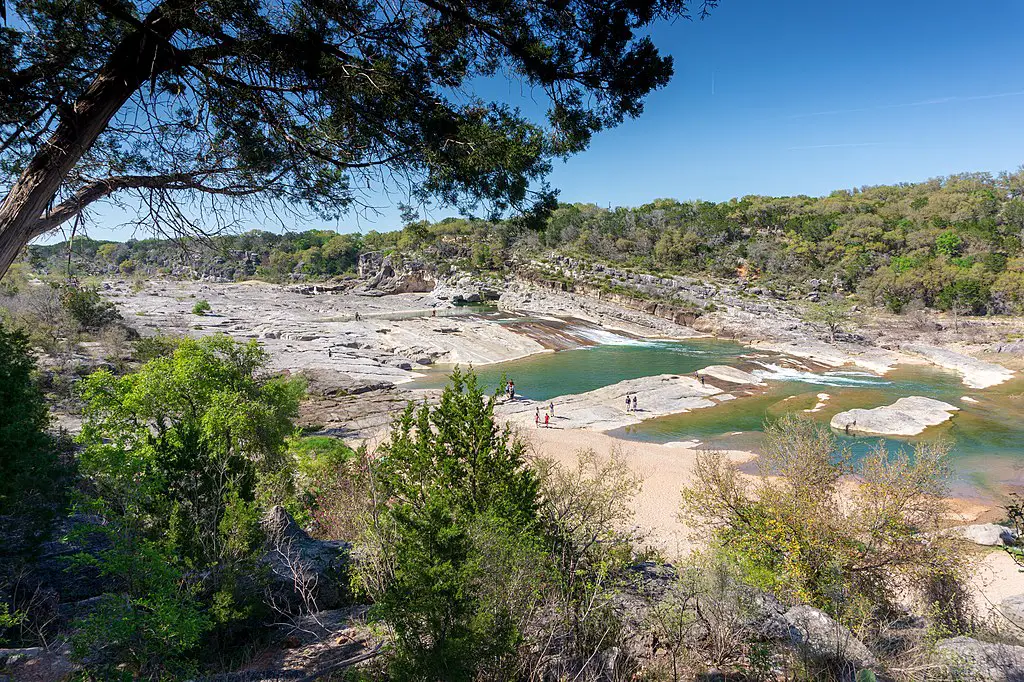
Pedernales Falls State Park is perfect for two particular species: Golden-cheeked Warblers and Painted Buntings.
Arriving early morning is a must. Vegetation is dense here, so once late morning hits and the birds stop moving and singing, they become frustratingly difficult to find.
The perfect time to visit is late April through May because the Painted Buntings have arrived in full force and are singing up a storm. It’s possible to get dozens of them in a single morning.
Golden-cheeked Warblers arrive by mid-March, and stay active through mid to late May. The central Texas Hill Country is the only place in the United States to see this bird, so it’s usually the main target of visiting birders.

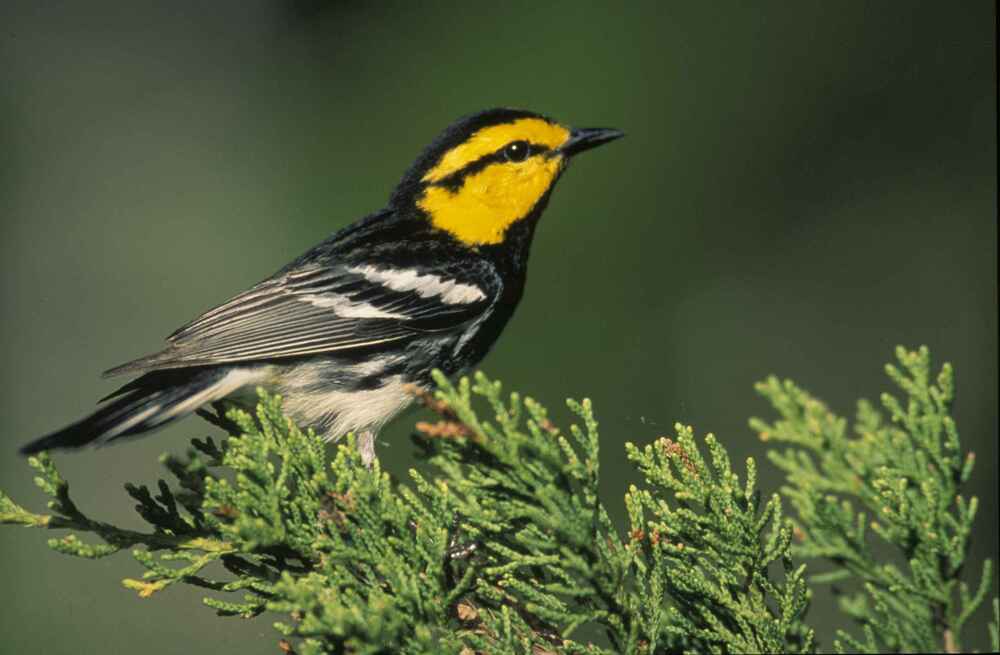
The best spots to find a Golden-cheeked Warbler in the park is the Pedernales Falls Trailhead and parking lot. But it has to be early, before other people arrive. Once cars start pulling in and human activity increases, the Golden-cheeks often retreat away from the trail.
Another great spot is the RV and Camper area. Just slowly walk the pavement and listen for the warbler’s buzzy song, and you’ll find one soon enough.
Lastly, the bird blind and butterfly garden here is fantastic. Many places around the state claim to have great bird blinds, but the one at Pedernales might be the best.
The blind includes two separate buildings, both with full width glass windows. Bird food is put out early each morning, and the birds gorge themselves until it runs out, which is usually by 10:30am.
Birds of Interest at Pedernales Falls State Park
| Common Ground-Dove | |
| Greater Roadrunner | |
| Canyon Wren | |
| Rufous-crowned Sparrow | |
| Golden-cheeked Warbler | March – June |
| Ash-throated Flycatcher | Spring – Fall |
| Blue Grosbeak | Spring – Fall |
| Indigo Bunting | Spring – Fall |
| Painted Bunting | Spring – Fall |
| Pine Siskin | Winter |
South Llano River State Park
Tips for Birding South Llano
- Visit the multiple bird blinds.
- Bird along the river.
- Late March through May are best for Golden-cheeked Warbler and Black-capped Vireo.

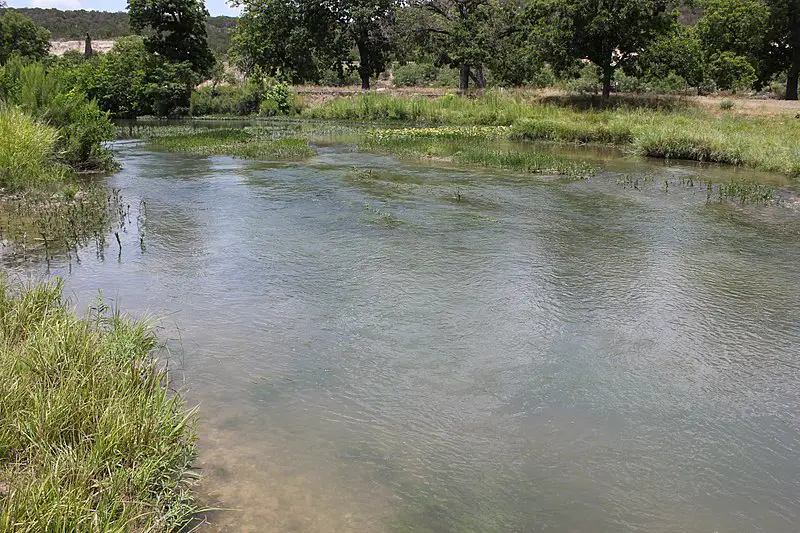
South Llano State Park is located at biogeographic crossroads, allowing you to see Central Texas, West Texas, and South Texas species all in one place.
Bird and wildlife activity is generally high year-round, and the best way to experience this park is by spending a night camping. After dark you’ll hear Eastern Screech-Owls, Common Poorwills, and Lesser Nighthawks calling.
The four bird blinds here are fully enclosed, with large windows to view out of. Black-capped Vireos can be seen regularly at the Agarita Blind from late March through July.

Species of Interest at South Llano State Park
| Northern Bobwhite | |
| Ringed Kingfisher | |
| Green Kingfisher | |
| Vermillion Flycatcher | |
| Verdin | |
| Bushtit | |
| Black-throated Sparrow | |
| Rufous-crowned Sparrow | |
| Canyon Towhee | |
| Lesser Nighthawk | Spring – Fall |
| Common Poorwill | Spring – Fall |
| Zone-tailed Hawk | Spring – Fall |
| Black-capped Vireo | Spring – Fall |
| Hutton’s Vireo | Spring – Fall |
| Cassin’s Sparrow | Spring – Fall |
| Yellow-breasted Chat | Spring – Fall |
| Scott’s Oriole | Spring – Fall |
| Painted Bunting | Spring – Fall |
| Golden-cheeked Warbler | March – June |
Goose Island State Park
Tips for Birding Goose Island
- Visit at low tide if possible
- Look for Whooping Cranes during winter in the field across from Big Tree
- Spring migration birding is excellent here (April – early May)

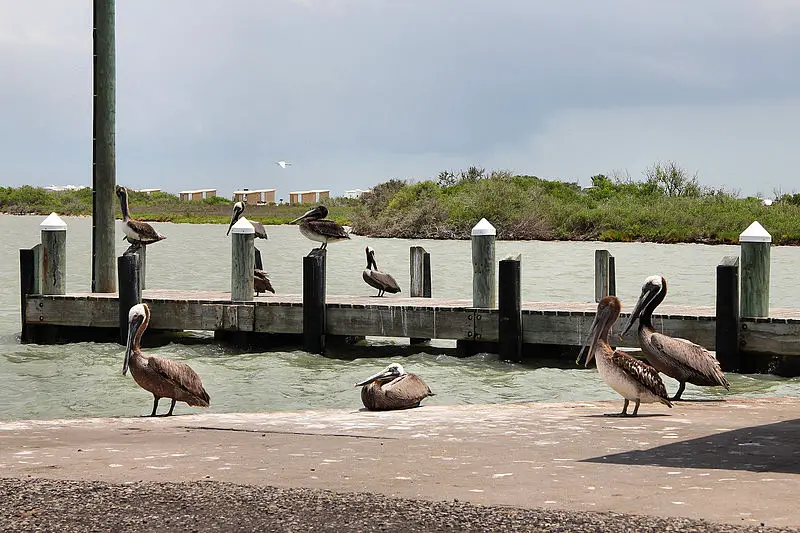
Goose Island is a great little state park right on the coast. The winter birding is always enjoyable, and spring migration here can be fantastic.
It’s possible to cover the entire park in a single morning. Goose Island itself is a skinny spit of land about .5 miles long, and offers easy viewing of the bay. The lengthy fishing pier provides views of shorebirds on close sandbars during low tide.
Ducks can often be seen on the water like Red-breasted Merganser and Common Goldeneye. Common Loon can be present as well.
Mature Live Oaks occupy much of the interior of the park. From mid-April to mid-May this woodland can be phenomenal for spring migrants. This is by far the most exciting time of year to visit this park.
If you drive north on Palmetto Street (away from the main park area) you’ll find Big Tree, a particularly old and massive Live Oak.
Across the street from Big Tree is an open field with a small pond. Whooping Cranes visit this field regularly from November through March. They can be easily seen from the road.
In summary, scan the waters and sandbars along Goose Island, bird the wooded interior of the bird, and swing by Big Tree on your way out. Go slow and be thorough, and you’ll be rewarded with a good species list regardless of season.
Species of Interest at Goose Island State Park
| Buff-bellied Hummingbird | |
| Long-billed Curlew | |
| American Oystercatcher | |
| Black Skimmer | |
| Common Goldeneye | |
| Red-breasted Merganser | |
| Common Loon | |
| Whooping Crane | |
| Whimbrel | |
| Painted Bunting | |
| Wood Thrush | April & May |
| 25+ warbler species | April & May |
Need Something Closer to Home?
If all these options are too far, use the Texas Hotspot Map to find a great birding hotspot close to where you live

